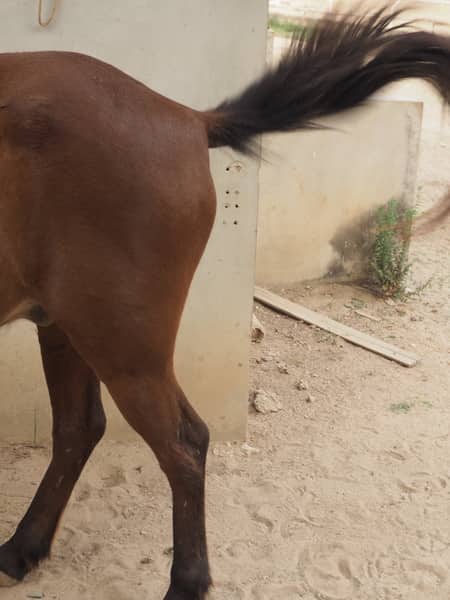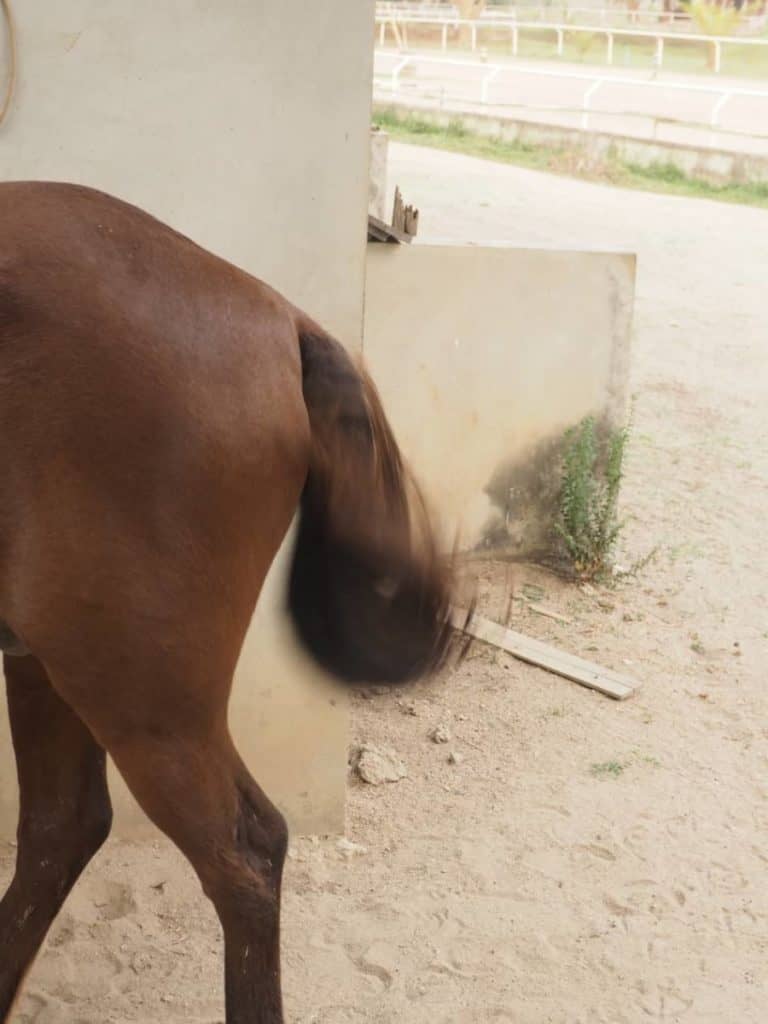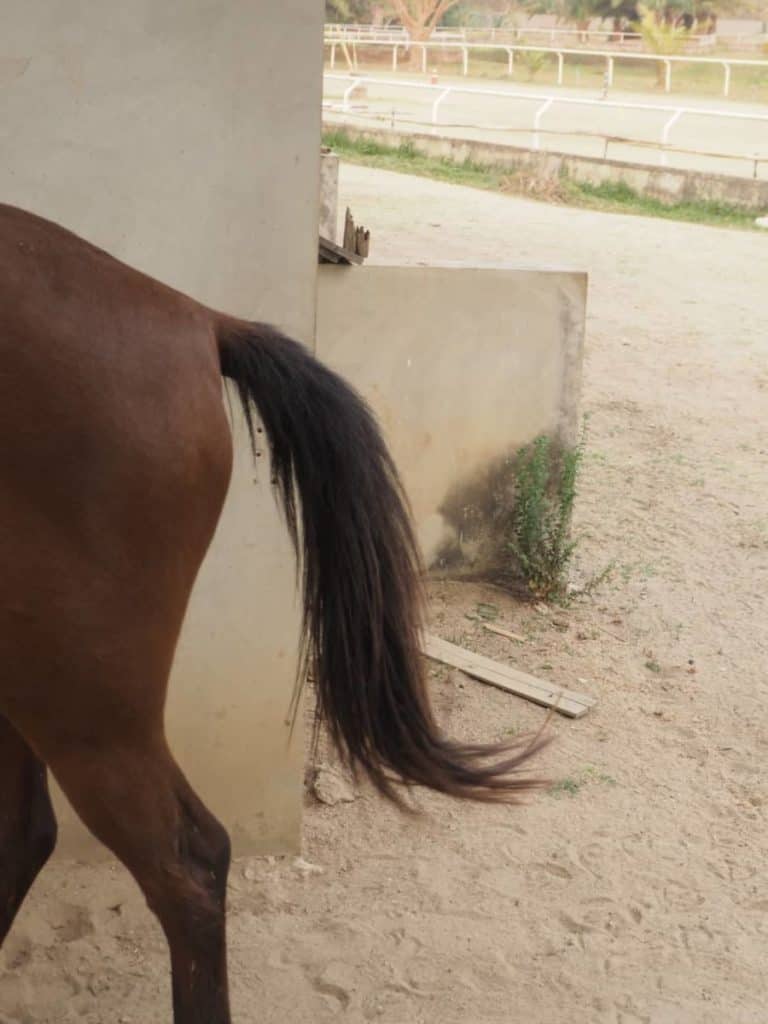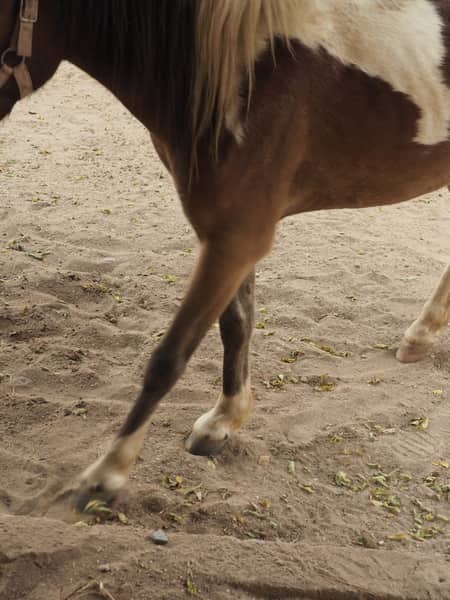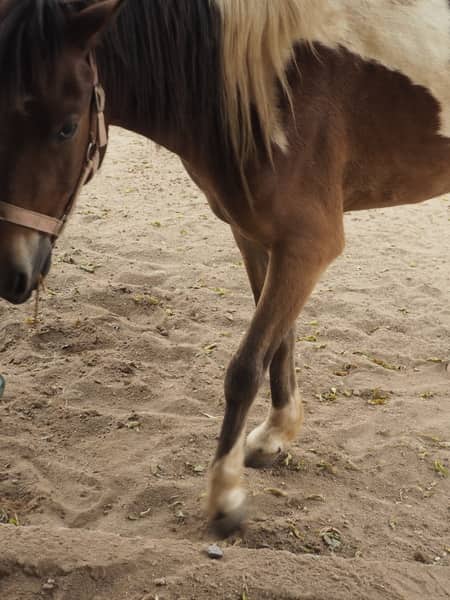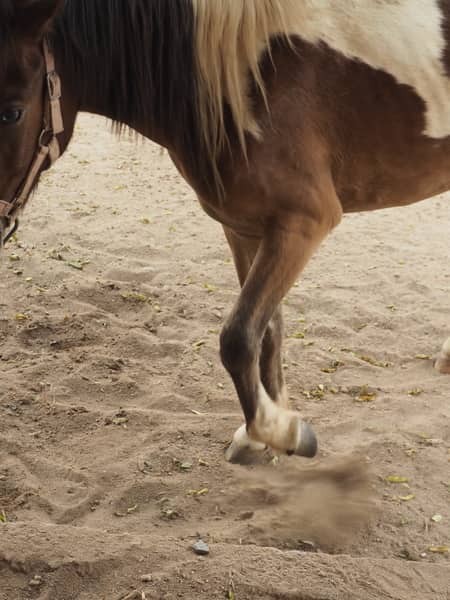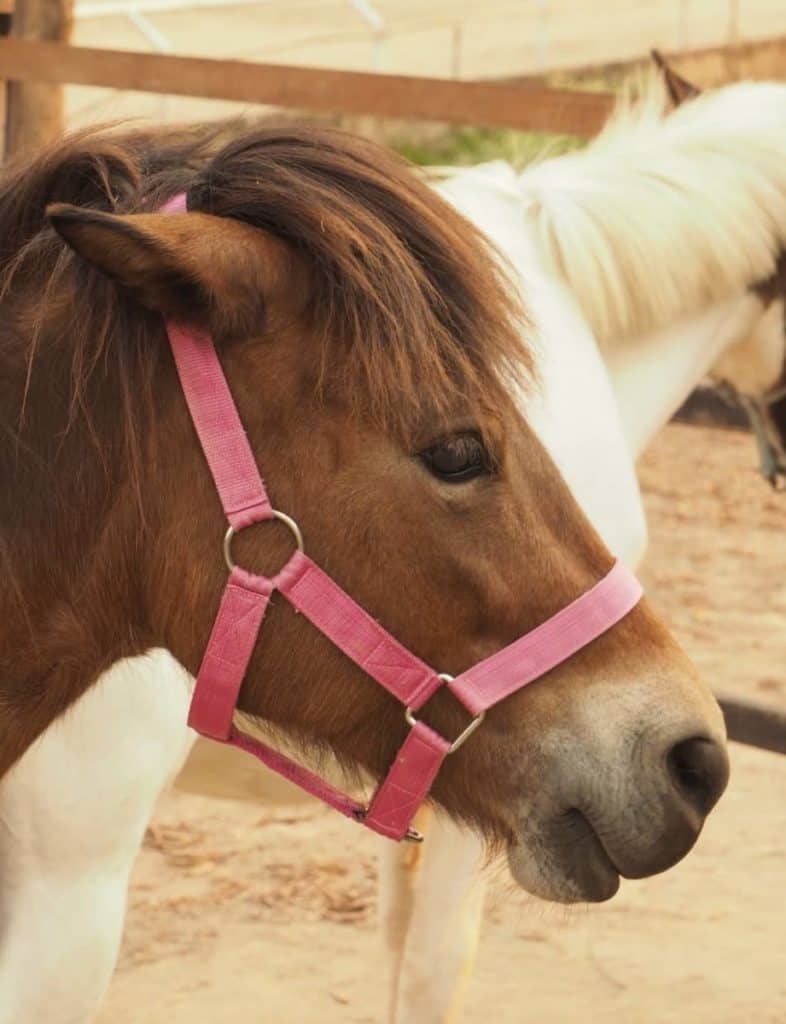
For thousands of years, the strength, power, agility, and speed of horses have served us, humans, well. We have commandeered them for all manner of tasks such as farming, warfare, transport, and leisure. We have built relationships with these majestic animals and anyone who has formed a close bond with their horse will know just how special that is. So special that it can be easy to forget that they are, after all, animals.
Their communication systems are built for navigating the politics of a herd, all with their own big teeth, hard feet, and powerful limbs. At 5-10 times the weight of an average human, we are no match for a horse if we fail to read his communication well enough and end up on the receiving end of his anger. It’s up to us to know what to look out for and respond accordingly, for our own safety as well as our horse’s wellbeing.
So, how do you know if a horse is mad?
As with all communication, the different elements rarely work in isolation from one another, so it’s important to be able to recognize and assess multiple signals, as well as the context of the situation, all at the same time. If you notice any of the following behaviors then it could be a good indication that your horse is starting to get mad and you need to assess further or take action to diffuse the situation:
- Pinning ears back
- Baring teeth
- Rapid tail movement
- Cocking a hind leg
- Stamping / Pawing
- White eyes
- General tension
#1 Pinning Ears Back

Relaxed ears pointing forward 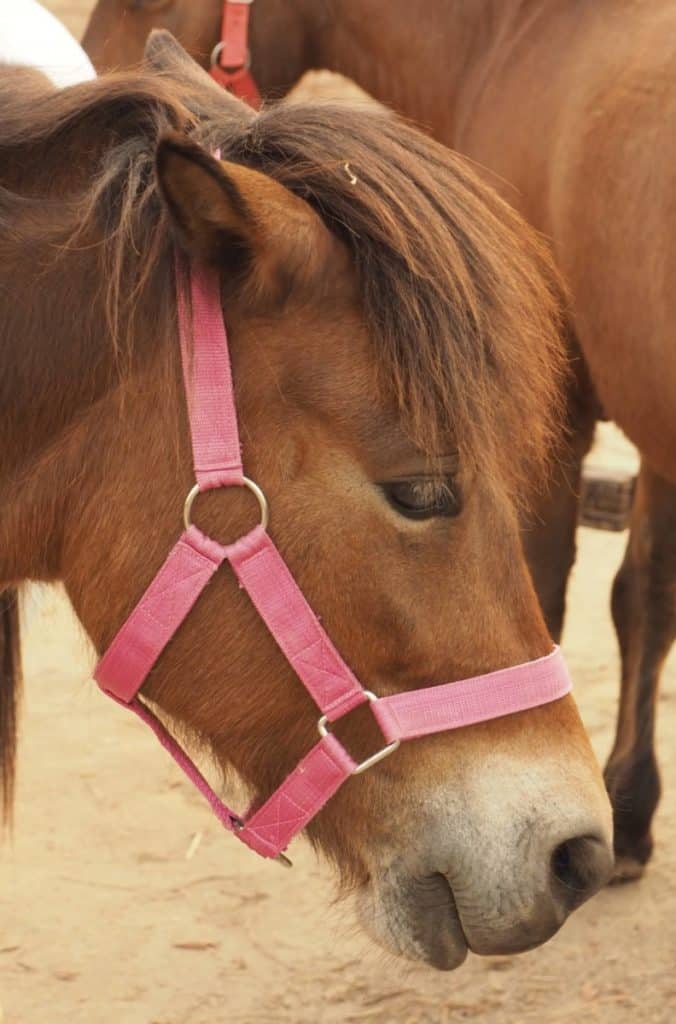
Relaxed ears pointing back 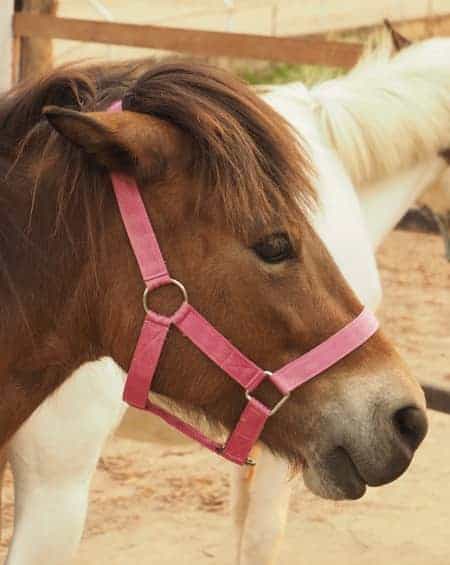
Ears flat back and tense face
Horses have a keen sense of hearing, and the ability to move their ears to help them locate exactly where a sound is coming from. This neat feature is designed to help them assess whether there is any impending danger, exactly where it is in relation to themselves and if necessary, flee. So, it follows that you will often see your horse’s ears swiveling around, one facing forward and one back, or both facing forwards or backward. He’s just listening out for what’s around and deciding what to do with that information. He might even be listening to you as you give him commands.
However, if your horse flattens both ears against his head then the stakes have risen and it’s time for you to do the listening. He’s angry and preparing for battle. What he’s actually doing is tucking them out of the way, so they don’t get damaged or ripped off during conflict. You’re going to want to either get out of the way or take control of the situation and separate him from the source of his anger.
#2 Baring Teeth
Sometimes, giving your horse a taste or smell of something new will lead to much hilarity (and it never gets old, let’s face it) as he curls up his top lip and shows you his teeth or ‘laughs’. Far from being angry, he’s simply using a special, in-built olfactory function to try and make sense of what you’ve just presented him. Similarly, if his bottom lip is hanging loose as he relaxes in his stable – no need for concern, he’s just super-chilled.
Shift to the other end of the scale, where you notice his muzzle is tense, his lips are pursed, his head is stuck out or held high and his teeth are on show, and this tells an entirely different story. He’s giving off all the signals that a bite is imminent; a sure-fire indication that your horse is mad.
#3 Rapid Tail Movement
If there are lots of flies or insects around then it’s likely your horse will use his tail to try and get rid of them or stop them settling on him. This movement will be fluid or intermittent, and other body language may well show relaxation. He might be grazing or have his head low and eyes half-open, for example.
On the other hand, if there are no insects or obvious reasons for him to be swishing his tail around, and it’s more frequent or urgent, then it could well be that he’s angry.
Again, this is a warning sign of something more serious, like a kick, on its way. Being lashed by a swishing tail is potentially pretty painful but nothing compared to the impact of a hoof with half a ton of horse behind it.
#4 ‘Cocking’ a Hind Leg
Sometimes when relaxing, your horse will ‘rest’ a leg like we humans do, by taking his weight on 3 of his legs and resting the fourth. From time to time he might change legs, shift his weight over and ‘rest’ a different one. Whilst the movement of the leg itself is similar, this shouldn’t be confused with him ‘cocking’ a leg when he is preparing to kick out.
The key to telling the difference is in the rest of his body language. Is the rest of his body tense? Has he lifted his neck and stuck out his head? Has he partially lifted one of his hind legs and rested his toe on the ground? Is he also swishing his tail around? If so, then a combination like this is a more dramatic warning that he may be about to kick out.
#5 Stamping or Pawing
Common in frustrated stallions who want to mate, this behavior can also indicate boredom, impatience or agitation. It’s less likely to indicate that your horse is mad; maybe he wants out of his stable or there’s a fly on his quarters getting on his nerves so he’s stamping to get rid of it.
If you find yourself in a field though, with your horse pawing the ground or stamping whilst fixed on another horse, then this is one of the occasions that it probably does mean he’s angry; he is signaling this to the other horse and letting him know that he intends to take action. It would be wise to remove yourself from this situation as you don’t want to find yourself in the line of charge or caught in the middle of a kicking match.
#6 White Eyes
Some horses have the white of their eye on show naturally, so this is more about knowing what is normal for your horse and being able to take cues from any changes you notice. Rolling their eyes to show more of the white can be an indication of excitement or fear and whilst that isn’t strictly related to anger, it can produce the same results. A frightened horse is more likely to lash out or bolt. It is prudent to watch out for this alongside the other signs that your horse might be mad.
#7 General Tension
As with humans, horses tense up when they get mad. Their nostrils flare, muzzles become tight and tense, their neck and back will tense, they may tuck in their hindquarters and flatten their tail. Whilst these signs will usually indicate anger, it’s important to also investigate whether your horse might be in any pain. For example, if he has become tense when being ridden or when doing a particular movement or exercise then it will be worth getting his back and tack checked before concluding that he is angry.
You Know Your Horse is Mad, Now What?

You’ve found yourself in a situation with an angry horse and you’re wondering what is the best way to handle it?
There are many options depending on the exact situation, but above all, be safe. If you don’t know the horse, or if your horse is showing signs of aggression that you have never seen before, then it may be safest to remove yourself from that situation.
If this is a horse that you already have a relationship with and you are confident in how he responds to you and to outside influences, then you may feel comfortable reprimanding him if his anger is directed towards you.
If you know that his anger is born out of fear, then you might find it better to soothe him and move him on from whatever is making him angry. In any case, you will want to reflect on what made him mad in the first place and either do some training with him to teach him he doesn’t need to get mad or take steps to remove the source of his anger. For example, he might not get on with another horse in the herd and it will be better to separate them than to have either of them (or yourself), in danger of serious injury.
It’s vital to be able to recognize the different ways that your horse communicates his moods. You must also be able to assess the environment to make quick judgments about what’s driving his behavior and enable yourself to act quickly if you need to.
Once you’ve researched the basics, the best way to build that bond is to spend time with him, observe him and pay attention if anything changes. Watching and listening closely will tell you all sorts of things about how he is feeling, which has endless benefits when it comes to training him and looking after his health, as well as your own safety.
So, you needn’t be left wondering ‘how do you know if a horse is mad?’ because once you know the signs, he’ll tell you himself!
